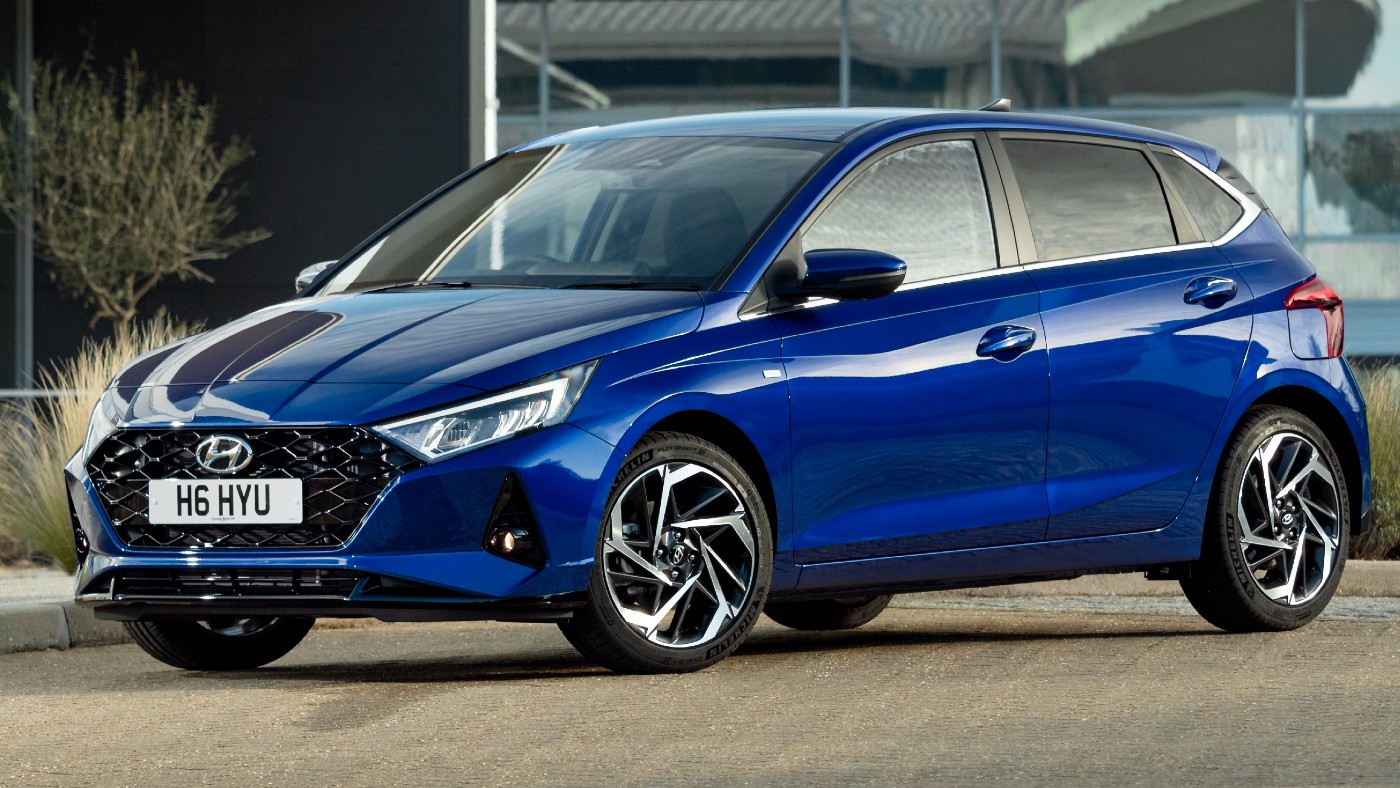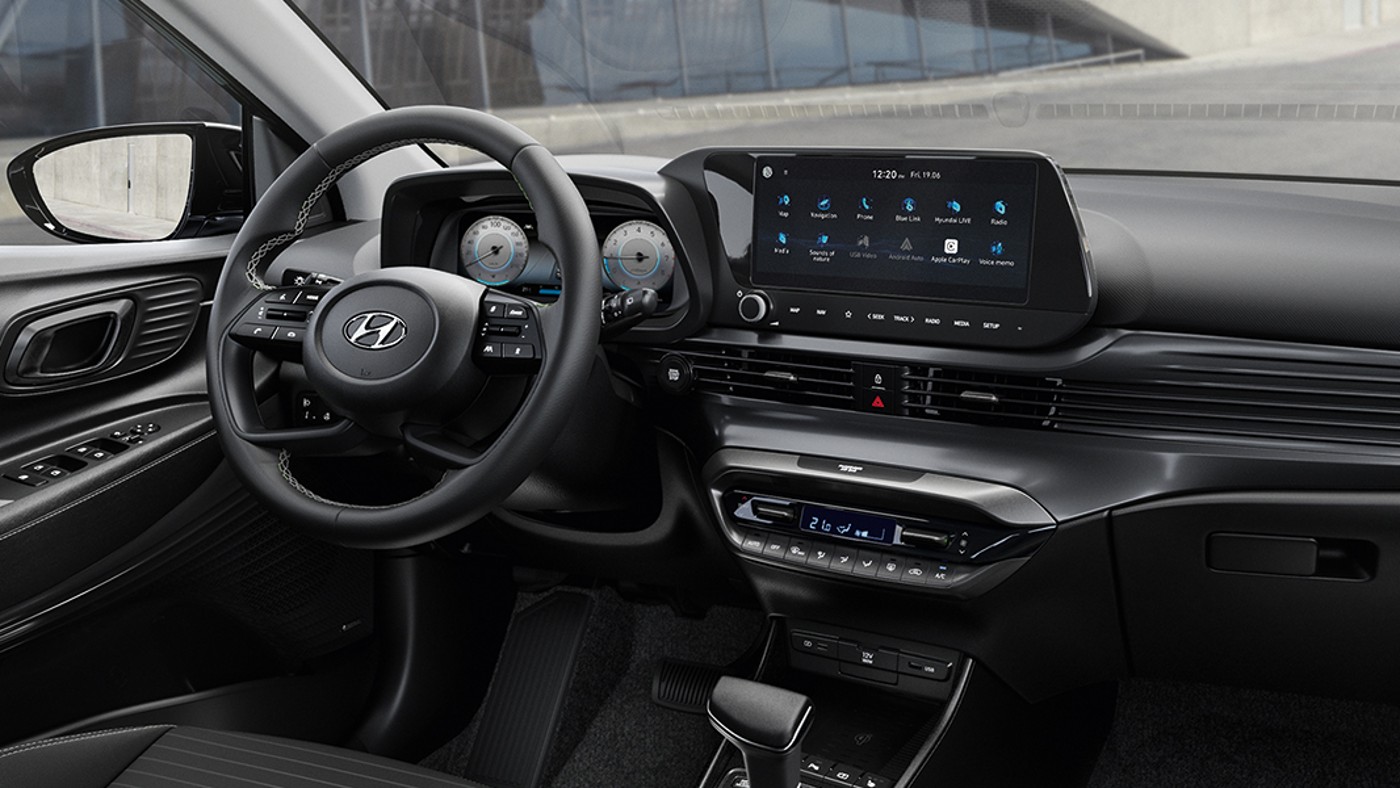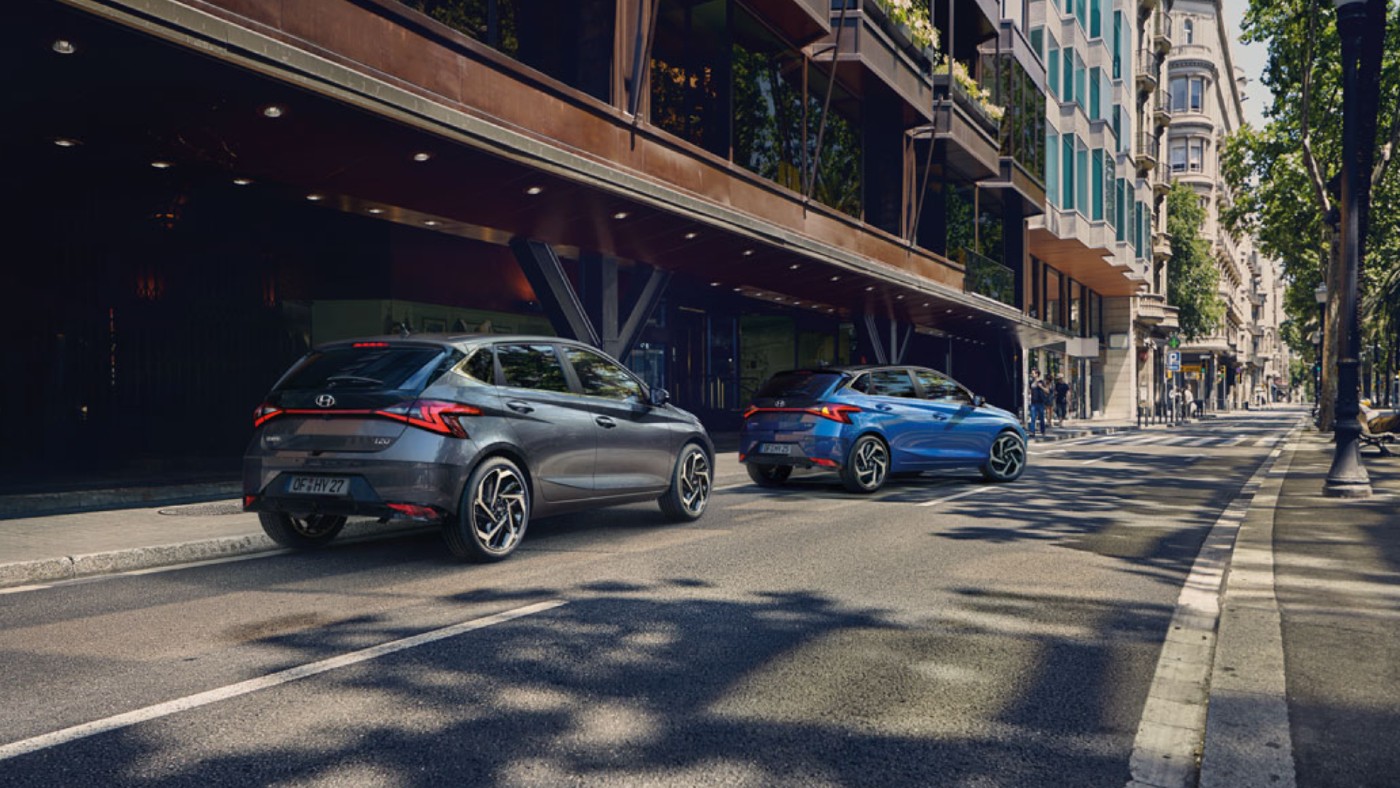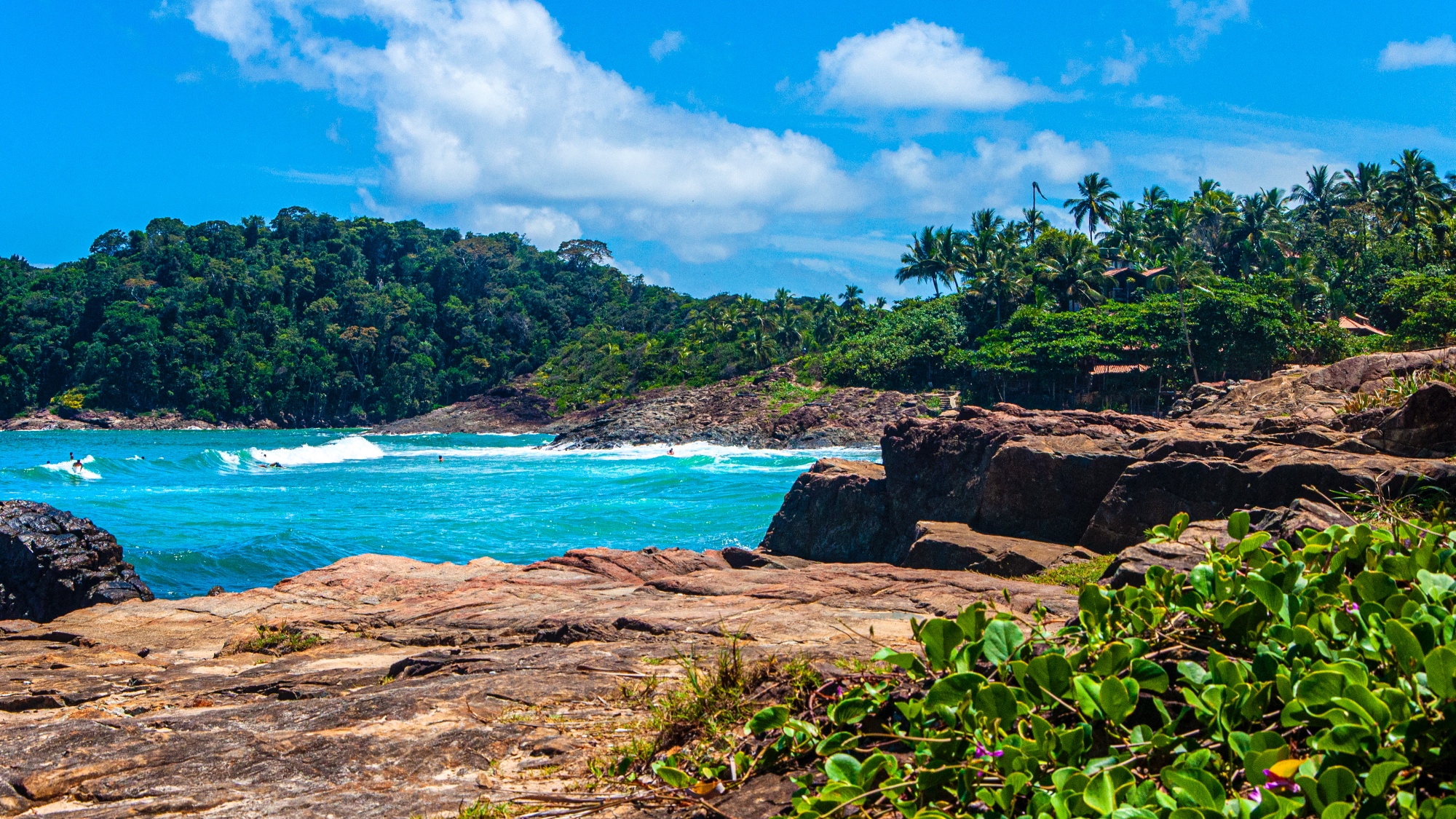Hyundai i20 reviews: what the critics say
The i20 appears ‘half-inched from a Marvel villain’s costume’
Nothing quite beats the sheer joy of pitching a 600bhp supercar through the undulating turns of a British B-road – when the weather allows.
The supercars of yesteryear, such as the Ferrari F355 and 993 Porsche 911, were particularly well-suited to a quick sprint on a Saturday afternoon. But you’d never want to rack up too many miles in case a mechanical gremlin brought your drive to a premature and costly end.
Today’s speed machines are, thankfully, far more reliable, but there are still all sorts of reasons why supercar owners might want to keep their mileage to a minimum. The McLaren 600LT, for instance, is covered in carbon fibre surfaces that cost a small fortune to repair, so you’ll only ever want to bring it out of the garage when conditions are perfect.
This is where the hot hatchback comes into its own.
The premise is simple: take a three or five-door family hatchback and fill it with a host of performance parts so that it can give a supercar driver a hard time on a racetrack.
Volkswagen’s Golf GTI has arguably been the king of the market since the first model arrived in 1976, but a number of opponents have arrived since then. The Renault Sport Megane is tailored towards the more hardcore hot hatch owner, while the Honda Civic Type-R has bags of performance and typically radical looks.
But now there’s a new contender for top spot of the hot hatch market: the motorsport-inspired Hyundai i30 N.
We’ve been behind the wheel of Hyundai’s hot hatch to see whether it’s the perfect everyday car for the supercar collector.
First, a bit of back story. The i30 N isn’t just a warmed up version of Hyundai’s i30 family hatchback. The Korean carmaker’s N division is headed by Albert Biermann, the man behind some of BMW’s greatest performance cars from the firm’s M division.
Biermann was drafted in to work some of his engineering magic on the i30 N to give the hot hatch extra cachet among petrolheads. His influence on the project has not only ensured that the i30 N appeals to car fans, but also provides a key link between Hyundai’s consumer cars and its motorsport programme.
Under the bonnet sits a 2.0-litre turbocharged four-cylinder engine that produced 271bhp in our i30 N Performance model. The motor is coupled to a six-speed manual gearbox, which helps the front-wheel drive hatch sprint from 0-62mph in 6.1 seconds (in Performance trim).
It certainly feels punchy on the open road, especially when the speed limit changes from 30mph to 60mph. There’s a small delay between pressing the accelerator and the car delivering its maximum power, as you’d expect in a turbo car, but this gives it a retro feel, as if it were an old Subaru Impreza from the early 1990s.
But it’s the i30 N’s chassis and handling that really shine through.
At first, we found the i30 N’s handling a little obscure. As the car is front-wheel drive, we expected it to feel heavy when manoeuvring around twisty bends. While that seems to be the case when you turn the wheel, the car’s electric limited-slip differential provides a level of grip that we’d never have expected from a front-wheel drive car.
The feeling that the car’s handling changes in the middle of corners can be a little jarring at first, but it soon gave us the confidence to drive it as if it were a mid-engine sports car.
There’s a host of driving options when you press the chequered flag button on the steering wheel. These include settings for suspension stiffness, the electric limited-slip differential and the weight of the steering.
You can also adjust the sound of the exhaust from the menu. But it’s worth opening a window while you do so. The i30 N is pretty loud although it isn’t obvious from inside the cabin as there’s a hefty amount of sound insulation that means it’s relatively quiet. We were told that people could hear us coming well before we arrived. This, admittedly, won’t be a problem for most petrolheads.
What will be a problem, though, is the quality of the cabin. The plastics found throughout the interior are disappointingly cheap and this is especially noticeable on the lower half of the centre console.
The design of the i30 N’s interior is inoffensive but acceptable. It’s unlikely to split opinion like the interior of the bold Honda Civic Type R, nor does it have the plush feel of the VW Golf GTI.
There’s still plenty of tech in the interior. We were thrilled to see a wireless smartphone charger built into the centre console, a feature that’s available in standard models. The infotainment system’s design is also noteworthy as it appears to be inspired by the Gran Turismo racing games.
Much like its cabin, the i30 N’s exterior design is nothing to write home about. Aggressive bumpers and 19in alloy wheels set it apart from the standard i30, but it’s nowhere near as flashy as the Renaultsport Megane or Civic Type R.
While we’re a fan of the car’s subtle looks, which highlight its versatility, we recommend choosing the “Performance blue” paint scheme on the options list. It adds £585 to the car’s £29,495 price tag (in Performance trim), but it’s the same colour as Hyundai’s racing cars and gives the hatchback a much-needed sporty look.
Overall, the i30 N appears to be a near-perfect car for supercar owners yearning for driving thrills but keen to avoid worrying about adding extra miles to their beloved McLaren or Ferrari.
Yes, the cabin is disappointing and yes it takes time to adapt to the car’s handling, but we believe these drawbacks are easy to accept in a car that’s priced at around £30,000.
The i30 N isn’t just an impressive first attempt at creating a hot hatchback, it’s one of the best cars in the sector currently on sale.

“Sensuous Sportiness.” That’s how Hyundai describes the design philosophy behind the new i20, its answer to the Ford Fiesta, Peugeot 208, Volkswagen Polo and “leagues of other vastly popular superminis”. The new generation i20 is a more striking car than the one it replaces, Top Gear said, which is just as well as it was “a nice enough thing”, but “quite tedious to look at, sit in and drive”.

On the inside, the new Hyundai looks quite smart, though owing to ribbed strakes covering the door panels, it looks as though they’ve been “half-inched from a Marvel villain’s costume”, said The Daily Telegraph. And despite being a compact vehicle, it’s not at all cramped in either the front or the rear seats; in the back, the i20 is more spacious than most of its rivals, with plenty of headroom and legroom.

The i20 has been improved in every area, said Auto Express, including under the bonnet, where its “impressive” one-litre, three-cylinder petrol unit assisted by mild-hybrid technology is relatively economical, yet delivers “smooth and punchy power”. For the first time “we’d call the i20 a genuine Fiesta rival in terms of driver appeal” – as much an indication of how far the i20 has come as anything else. Prices start from £18,800.
A free daily email with the biggest news stories of the day – and the best features from TheWeek.com
-
 ‘Jumping genes': How polar bears are rewiring their DNA to survive the warming Arctic
‘Jumping genes': How polar bears are rewiring their DNA to survive the warming ArcticUnder the radar The species is adapting to warmer temperatures
-
 January’s books feature a revisioned classic, a homeschooler's memoir and a provocative thriller dramedy
January’s books feature a revisioned classic, a homeschooler's memoir and a provocative thriller dramedyThe Week Recommends This month’s new releases include ‘Call Me Ishmaelle’ by Xiaolu Guo, ‘Homeschooled: A Memoir’ by Stefan Merrill Block, ‘Anatomy of an Alibi’ by Ashley Elston and ‘Half His Age’ by Jennette McCurdy
-
 Venezuela’s Trump-shaped power vacuum
Venezuela’s Trump-shaped power vacuumIN THE SPOTLIGHT The American abduction of Venezuelan President Nicolás Maduro has thrust South America’s biggest oil-producing state into uncharted geopolitical waters
-
 The ultimate films of 2025 by genre
The ultimate films of 2025 by genreThe Week Recommends From comedies to thrillers, documentaries to animations, 2025 featured some unforgettable film moments
-
 Into the Woods: a ‘hypnotic’ production
Into the Woods: a ‘hypnotic’ productionThe Week Recommends Jordan Fein’s revival of the much-loved Stephen Sondheim musical is ‘sharp, propulsive and often very funny’
-
 The best food books of 2025
The best food books of 2025The Week Recommends From mouthwatering recipes to insightful essays, these colourful books will both inspire and entertain
-
 Art that made the news in 2025
Art that made the news in 2025The Explainer From a short-lived Banksy mural to an Egyptian statue dating back three millennia
-
 Nine best TV shows of the year
Nine best TV shows of the yearThe Week Recommends From Adolescence to Amandaland
-
 Winter holidays in the snow and sun
Winter holidays in the snow and sunThe Week Recommends Escape the dark, cold days with the perfect getaway
-
 The best homes of the year
The best homes of the yearFeature Featuring a former helicopter engine repair workshop in Washington, D.C. and high-rise living in San Francisco
-
 Critics’ choice: The year’s top 10 movies
Critics’ choice: The year’s top 10 moviesFeature ‘One Battle After Another’ and ‘It Was Just an Accident’ stand out